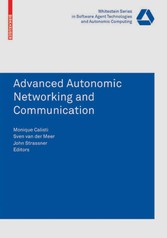Search and Find
Service
2 Electrochemical Wastewater Treatment Processes (p. 56-57)
Guohua Chen and Yung-Tse Hung
CONTENTS
INTRODUCTION
ELECTROCHEMICAL REACTORS FOR METAL RECOVERY
ELECTROCOAGULATION
ELECTROFLOTATION
ELECTRO-OXIDATION
SUMMARY
NOMENCLATURE
REFERENCES
1. INTRODUCTION
Using electricity to treat water was first proposed in England in 1889 (1). The application of electrolysis in mineral beneficiation was patented by Elmore in 1904 (2). Electrocoagulation (EC) with aluminum and iron electrodes was patented in the United States in 1909. The EC of drinking water was first applied on a large scale in the United States in 1946 (3,4). Because of the relatively large capital investment and the expensive electricity supply, electrochemical water or wastewater technologies did not find wide application worldwide then. However, in the United States and the former USSR extensive research during the following half century has accumulated abundant amount of knowledge. With the ever increasing standard of drinking water supply and the stringent environmental regulations regarding the wastewater discharge, electrochemical technologies have regained their importance worldwide during the past two decades. There are companies supplying facilities for metal recoveries, for treating drinking water or process water, treating various wastewaters resulting from tannery, electroplating, diary, textile processing, oil and oil in water emulsion, and so on.
Nowadays, electrochemical technologies have reached such a state that they are not only comparable with other technologies in terms of cost but also are more efficient and more compact. For some situations, electrochemical technologies may be the indispensable step in treating wastewaters containing refractory pollutants. In this chapter, the established technologies such as electrochemical reactors for metal recovery, EC, electroflotation (EF), and electro-oxidation (EO) will be examined. The emerging technologies such as electrophoto-oxidation, electro disinfection will not be discussed. Focus will be more on the technologies rather than analyzing the sciences or mechanisms behind them. For books dealing with environmentally related electrochemistry, the readers are referred to other publications (5–8). Before introducing the specific technologies, are reviewed few terminologies that are concerned by electrochemical process engineers. The most frequently referred terminology besides potential and current may be the current density (i) the current per area of electrode. It determines the rate of a process. The next parameter is current efficiency (CE) the ratio of current consumed in producing a target product to that of total consumption.
All prices incl. VAT













